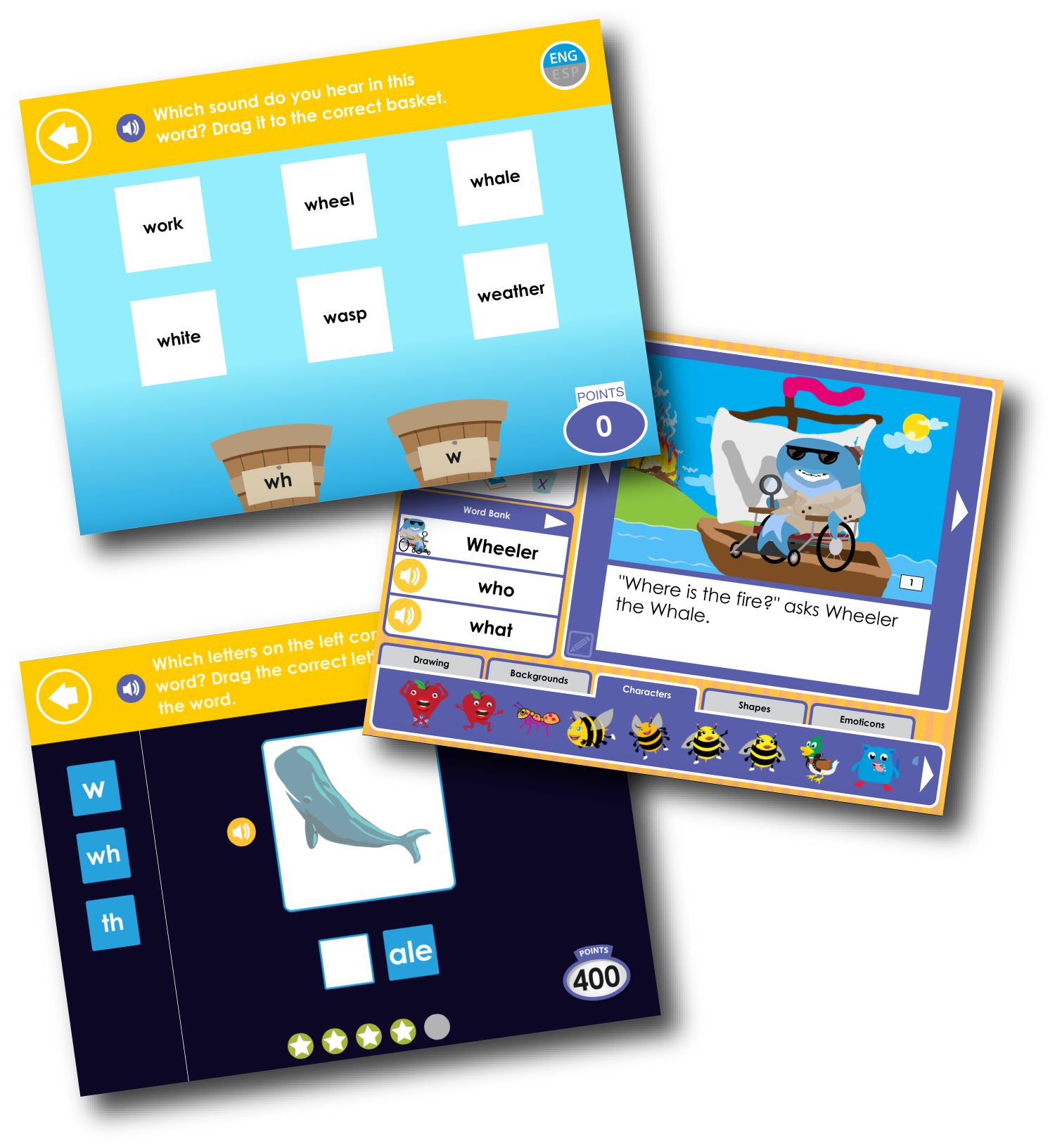We are excited to welcome Wheeler the Whale to our Mega Mouth 2 Decoder series in Level 2. The Mega Mouth Decoders teach English phonics, and Wheeler is our new character for the “wh” digraph. As always, we dug into the research to determine the best way to pronounce Wheeler’s phoneme.


While English speakers often pronounce “wh” the same as “w” (listen for your own pronunciation of which and witch), speech pathologists and reading specialists recommend associating the “wh” digraph with the /hw/ sound.
The /hw/ sound is unvoiced like /h/, but the lips are pursed to direct air forward in the shape of /w/. You might have children explore their mouth position by pretending they are blowing out a candle. To emphasize the position of the mouth, have the children try to “blow out a candle” by making the /h/ sound or the /w/ sound alone. Neither sound is effective for directing air to the candle. Then have children combine the sounds to make /hw/.
Research shows that teaching the /hw/ sound supports children in both decoding and spelling “wh” words. The Wheeler book and accompanying songbook emphasize /hw/ in question words like who, what, where, when, and why. As with all of the Mega Mouth Decoder books, Wheeler includes a series of phonics games and a writing activity where children can create their own variation of the book. We invite you to read about how Wheeler whizzes around town solving mysteries—and we hope he will inspire students’ curiosity along the way!





